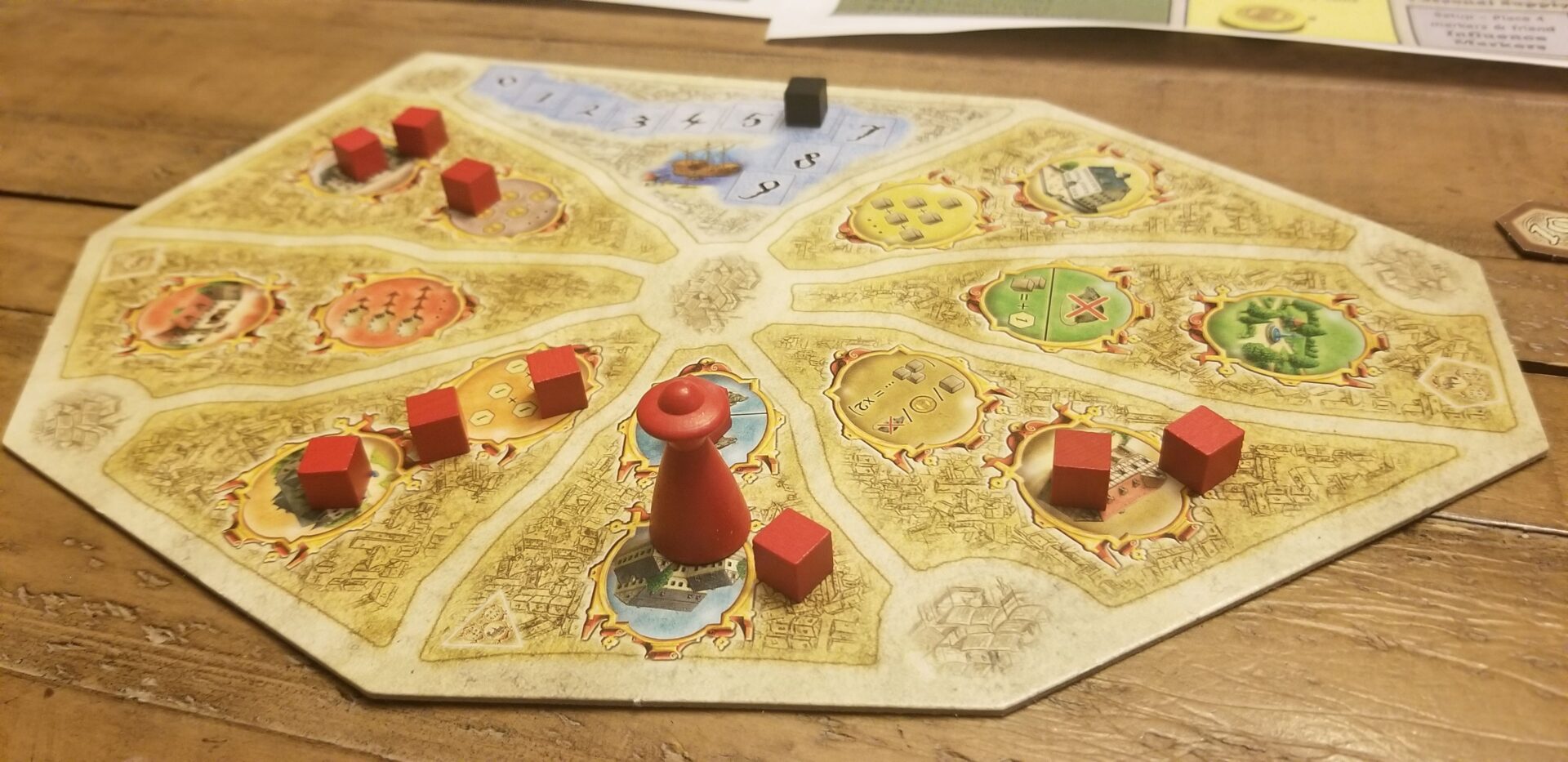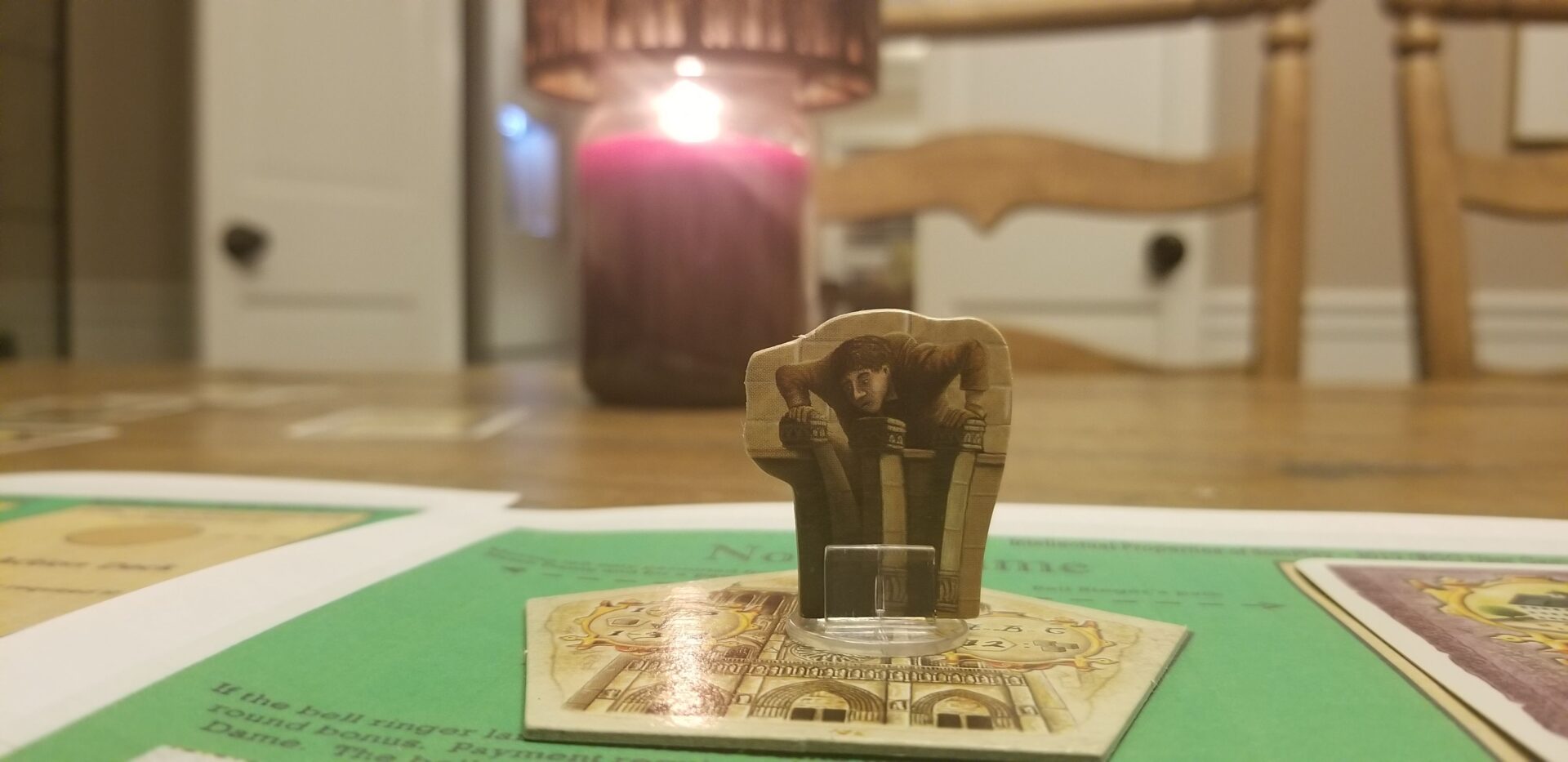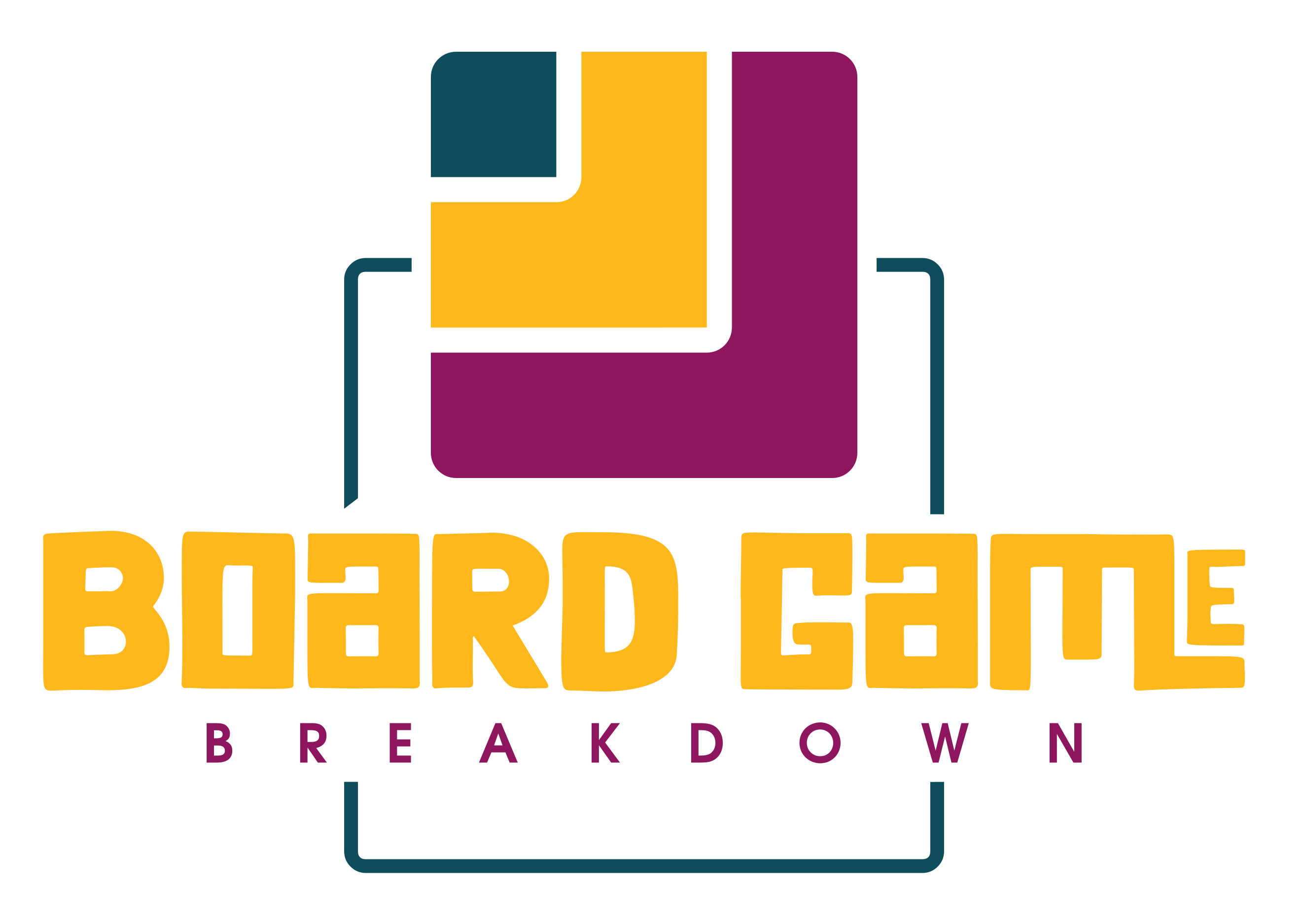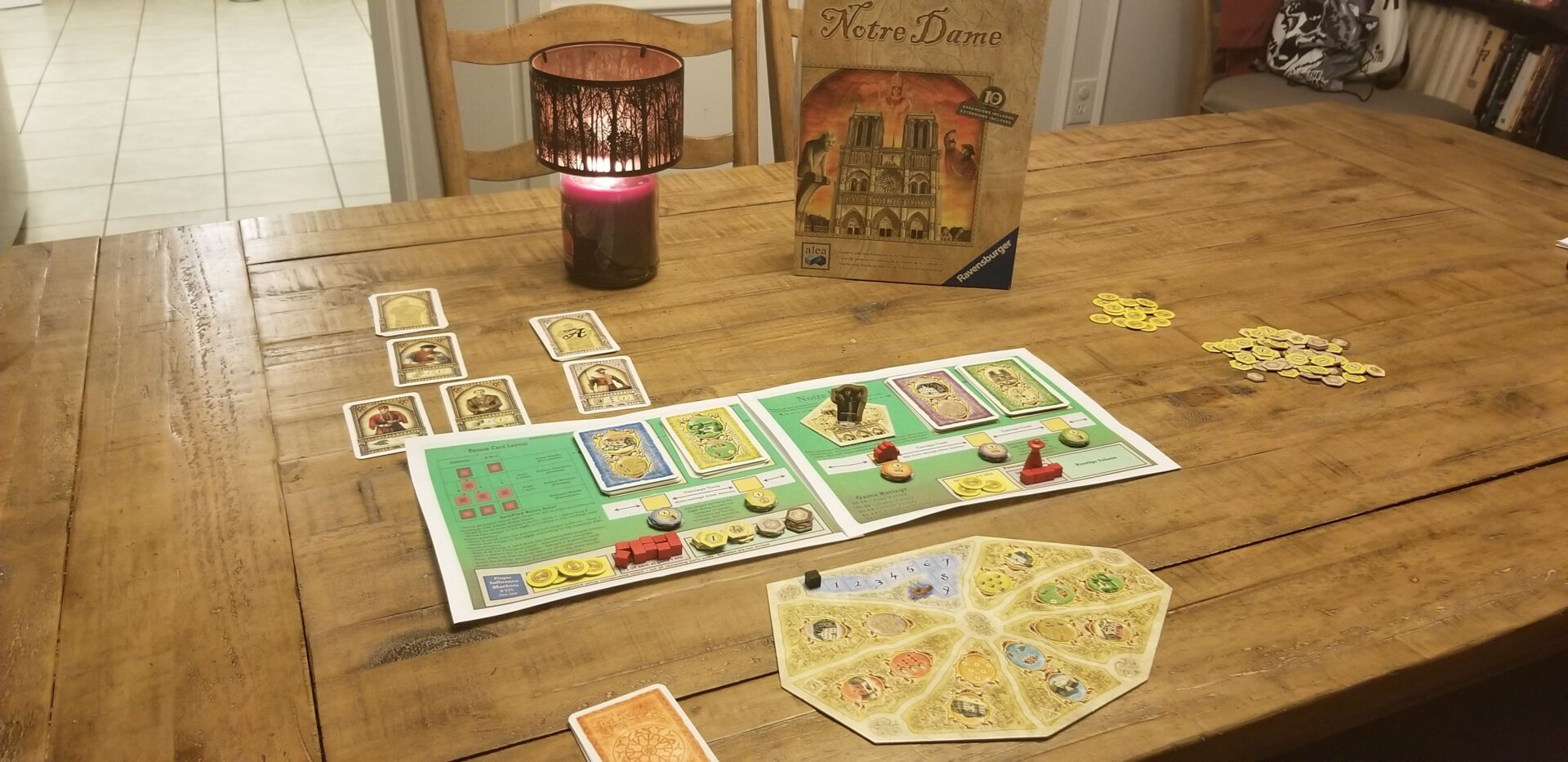
Name: Notre Dame
Year of Release: 2007
Player Count: 2 – 1 Players (1 Player with Fan-Made Variant)
Playing Time: 45 – 75 minutes
Designer: Stefan Feld
Publisher: Ravensburger
Primary Mechanisms: Area Majority, Open Drafting, Point to Point Movement
Weight (According to boardgamegeek.com): 2.75
Overview
For this review, I’ve chosen to try out a solo play of the Stefan Feld board game, “Notre Dame.” The overview in the rule book says that I will “assume the roles of heads of influential families in Paris at the end of the 14th century”, but knowing what I know from playing the multiplayer version, I’m really just going to be pushing cubes around and cursing the rats under my breath. Maybe heads of influential families of Paris constantly cursed the rats too?
For this variant, I’m using a set of rules designed by SoloPlay back in 2010. Right up front, this variant is a really interesting take on the game as it plays much different than a lot of solo variants that I come across for other games. The designer really went out of the way to figure out a clever way to incorporate the virtual player and this alone should cause you to try this variant out if you’re a fan of the base Notre Dame game. Click here for a link to the variant posted on boardgamegeek.com.
Rules and Setup

You’ll notice from my pictures that this variant comes with its own board to use in conjunction with the base game. It’s not the prettiest thing in the world but it gets the job done and even incorporates a lot of reminders throughout, so you don’t always have to head back to the SoloPlay rules if you forget something.
As you start setup, you’ll also see that you are going to end up using ALL of the player cards on the printed-out mat as well as all the message tokens. These cards will be kept in piles of like colors, shuffled and then placed in the appropriate Game Action Deck spaces on the mat. Below each of these, the corresponding-colored pile of message tokens are to be placed.
You will also follow the chart on the top left of the player mat to figure out how to arrange the Common and Professional player cards, the cards you can hire at the end of each round. Now enter the virtual player which is actually represented by the Bell Ringer figure. In a typical game, this figure only denotes the start player, but I like how this variant uses it as your opponent that you will be moving around the printed-out mat, taking actions, and doing other dastardly Bell Ringer things. You place out your player board and your deck of cards as you would in a normal game, along with your rat token and your player markers, then you’re ready to start.
Gameplay

I would strongly suggest that you have a firm handle on playing the normal multiplayer version of Notre Dame before trying out this solo variant. I could see it being fairly confusing if you don’t have a grasp of the game already. Even if you do have a grasp, it might take a few plays for it all to click as there are quite a few rules in place dictating how the Bell Ringer moves and takes cards. The virtual player mats and the instructions do a nice job of addressing all combinations so I never felt that I couldn’t figure something out without re-reading a portion for clarification.
The gist of this variant is the message tokens dictate how many spaces the Bell Ringer moves to the right, circling back to the first Action Card Deck when he runs off the right side of the board. Where the Bell Ringer lands is how you decide which stack to pull 2 cards (and later 1 card) from and then make a decision which 1 to discard. These combine with a draw of 3 cards from your own action deck, where you keep 1 and discard the others to make your hand that you’ll be playing from. You play 2 cards out of the 3 (like in the normal game) and do the actions. Sounds easy enough but there are some intricacies with the Bell Ringer that adds a lot of difficult decision to the game.
First, the Bell Ringer can not end on a deck with the top card being face down (meaning you’ve already taken a card from this deck on this round.) If you do, you must pay a coin to influence the Bell Ringer to move one more space to the right. If you’re out of money, you start losing Victory Points. Since the message tokens are controlling the move count for the Bell Ringer, it is totally plausible that he gets stuck in a loop, continuing to land on piles that are face down (or empty), costing you loads of money or Victory Points. So, how do we, as the active player, mess with the message tokens? Much like the base game, you will play your Carriage House card but instead of moving the carriage around your board, you’ll actually move the carriage down the row of yellow squares found under the Game Action Deck spaces. When you move the carriage, you collect the message token in that spot and then flip the next one over. This definitely adds importance to the Carriage House card.
Next, the Bell Ringer can’t land on the Notre Dame space without causing you to spend money or Victory Points but there is a twist here. If you’ve played the Notre Dame card and started to put player markers into the cathedral, you actually get Victory Points paid out to you every time the Bell Ringer lands on this spot. So yes, you might be spending money to move him to the right (since he can’t stay on the Notre Dame space) but in return, you might be collecting some sweet, sweet Victory Points toward end game scoring.
Lastly, there is an interesting twist going on with the player cards that can be hired at the end of the round. Honestly, I don’t even know how to explain it, but it adds some fun with these cards that I don’t feel with in the base game. There are some decisions to be made with hiring a “future” person, which could lower the number of rats coming into play, but also causes you to discard one of the other Common townsperson cards. Likewise, if you hire a Professional townsperson, you only get to discard one (of the two) Common townsperson cards which means you might be stuck with a not-so-good common card for multiple rounds.
Conclusion

If you’re new to Notre Dame, I would recommend you sit this variant out until you have some more experience with the game itself. But if you feel comfortable with the ins-and-outs of the game, I will highly recommend this. It is quite the change from the normal solo variant where you just play yourself and then another color is controlled by some type of deck that just spells out its actions for it. While the Bell Ringer isn’t even taking actions, he’s constantly hopping about the board, ruining your plans for which deck to pull from and generally just making you spend money or VP at the worst times. Oh, and don’t forget the blasted rats. They are still present, they are still carrying the plague, and they will still wreak havoc on your player board the second you forget about them.
Rating
Ratings are based on 5 main criteria: rulebook, setup, components, art & graphic design, and gameplay. The first 4 criteria are rated 1 to 5 and the gameplay is rated 1 to 10. These scores culminate in an “overall satisfaction” score that is rated from 1 to 10. If the reviewed game has both a solo and multiplayer mode, I have assigned scores separately to give context to which mode we enjoy more.
Links
As an Amazon Associate I earn from qualifying purchases.
Amazon: Notre Dame Board Game

